-
EXECUTIVE SUMMARY
-
Market Overview
-
Key Findings
-
Market Segmentation
-
Competitive Landscape
-
Challenges and Opportunities
-
Future Outlook
-
MARKET INTRODUCTION
-
Definition
-
Scope of the study
- Research Objective
- Assumption
- Limitations
-
RESEARCH METHODOLOGY
-
Overview
-
Data Mining
-
Secondary Research
-
Primary Research
- Primary Interviews and Information Gathering Process
- Breakdown of Primary Respondents
-
Forecasting Model
-
Market Size Estimation
- Bottom-Up Approach
- Top-Down Approach
-
Data Triangulation
-
Validation
-
MARKET DYNAMICS
-
Overview
-
Drivers
-
Restraints
-
Opportunities
-
MARKET FACTOR ANALYSIS
-
Value chain Analysis
-
Porter's Five Forces Analysis
- Bargaining Power of Suppliers
- Bargaining Power of Buyers
- Threat of New Entrants
- Threat of Substitutes
- Intensity of Rivalry
-
COVID-19 Impact Analysis
- Market Impact Analysis
- Regional Impact
- Opportunity and Threat Analysis
-
AIR SEPARATION PLANTS MARKET, BY TECHNOLOGY (USD BILLION)
-
Cryogenic Distillation
-
Pressure Swing Adsorption
-
Membrane Separation
-
Vacuum Pressure Swing Adsorption
-
AIR SEPARATION PLANTS MARKET, BY PRODUCTION CAPACITY (USD BILLION)
-
Small Scale
-
Medium Scale
-
Large Scale
-
AIR SEPARATION PLANTS MARKET, BY END USE INDUSTRY (USD BILLION)
-
Chemical
-
Metallurgical
-
Petroleum Refining
-
Food and Beverage
-
AIR SEPARATION PLANTS MARKET, BY PRODUCT TYPE (USD BILLION)
-
Oxygen Plants
-
Nitrogen Plants
-
Argon Plants
-
Combined Plants
-
AIR SEPARATION PLANTS MARKET, BY REGIONAL (USD BILLION)
-
North America
- US
- Canada
-
Europe
- Germany
- UK
- France
- Russia
- Italy
- Spain
- Rest of Europe
-
APAC
- China
- India
- Japan
- South Korea
- Malaysia
- Thailand
- Indonesia
- Rest of APAC
-
South America
- Brazil
- Mexico
- Argentina
- Rest of South America
-
MEA
- GCC Countries
- South Africa
- Rest of MEA
-
COMPETITIVE LANDSCAPE
-
Overview
-
Competitive Analysis
-
Market share Analysis
-
Major Growth Strategy in the Air Separation Plants Market
-
Competitive Benchmarking
-
Leading Players in Terms of Number of Developments in the Air Separation Plants Market
-
Key developments and growth strategies
- New Product Launch/Service Deployment
- Merger & Acquisitions
- Joint Ventures
-
Major Players Financial Matrix
- Sales and Operating Income
- Major Players R&D Expenditure. 2023
-
COMPANY PROFILES
-
Air Products and Chemicals
- Financial Overview
- Products Offered
- Key Developments
- SWOT Analysis
- Key Strategies
-
Praxair
- Financial Overview
- Products Offered
- Key Developments
- SWOT Analysis
- Key Strategies
-
Cryogenmash
- Financial Overview
- Products Offered
- Key Developments
- SWOT Analysis
- Key Strategies
-
SIC Onyx
- Financial Overview
- Products Offered
- Key Developments
- SWOT Analysis
- Key Strategies
-
NOVA Chemicals
- Financial Overview
- Products Offered
- Key Developments
- SWOT Analysis
- Key Strategies
-
Air Liquide
- Financial Overview
- Products Offered
- Key Developments
- SWOT Analysis
- Key Strategies
-
Linde
- Financial Overview
- Products Offered
- Key Developments
- SWOT Analysis
- Key Strategies
-
Taiyo Nippon Sanso
- Financial Overview
- Products Offered
- Key Developments
- SWOT Analysis
- Key Strategies
-
SIAD Macchine Impianti
- Financial Overview
- Products Offered
- Key Developments
- SWOT Analysis
- Key Strategies
-
Universal Industrial Gases
- Financial Overview
- Products Offered
- Key Developments
- SWOT Analysis
- Key Strategies
-
Deepak Nitrite
- Financial Overview
- Products Offered
- Key Developments
- SWOT Analysis
- Key Strategies
-
AMS DOW
- Financial Overview
- Products Offered
- Key Developments
- SWOT Analysis
- Key Strategies
-
Hangzhou Hangyang
- Financial Overview
- Products Offered
- Key Developments
- SWOT Analysis
- Key Strategies
-
Messer Group
- Financial Overview
- Products Offered
- Key Developments
- SWOT Analysis
- Key Strategies
-
APPENDIX
-
References
-
Related Reports
-
LIST OF TABLES
-
LIST OF ASSUMPTIONS
-
NORTH AMERICA AIR SEPARATION PLANTS MARKET SIZE ESTIMATES & FORECAST, BY TECHNOLOGY, 2019-2035 (USD BILLIONS)
-
NORTH AMERICA AIR SEPARATION PLANTS MARKET SIZE ESTIMATES & FORECAST, BY PRODUCTION CAPACITY, 2019-2035 (USD BILLIONS)
-
NORTH AMERICA AIR SEPARATION PLANTS MARKET SIZE ESTIMATES & FORECAST, BY END USE INDUSTRY, 2019-2035 (USD BILLIONS)
-
NORTH AMERICA AIR SEPARATION PLANTS MARKET SIZE ESTIMATES & FORECAST, BY PRODUCT TYPE, 2019-2035 (USD BILLIONS)
-
NORTH AMERICA AIR SEPARATION PLANTS MARKET SIZE ESTIMATES & FORECAST, BY REGIONAL, 2019-2035 (USD BILLIONS)
-
US AIR SEPARATION PLANTS MARKET SIZE ESTIMATES & FORECAST, BY TECHNOLOGY, 2019-2035 (USD BILLIONS)
-
US AIR SEPARATION PLANTS MARKET SIZE ESTIMATES & FORECAST, BY PRODUCTION CAPACITY, 2019-2035 (USD BILLIONS)
-
US AIR SEPARATION PLANTS MARKET SIZE ESTIMATES & FORECAST, BY END USE INDUSTRY, 2019-2035 (USD BILLIONS)
-
US AIR SEPARATION PLANTS MARKET SIZE ESTIMATES & FORECAST, BY PRODUCT TYPE, 2019-2035 (USD BILLIONS)
-
US AIR SEPARATION PLANTS MARKET SIZE ESTIMATES & FORECAST, BY REGIONAL, 2019-2035 (USD BILLIONS)
-
CANADA AIR SEPARATION PLANTS MARKET SIZE ESTIMATES & FORECAST, BY TECHNOLOGY, 2019-2035 (USD BILLIONS)
-
CANADA AIR SEPARATION PLANTS MARKET SIZE ESTIMATES & FORECAST, BY PRODUCTION CAPACITY, 2019-2035 (USD BILLIONS)
-
CANADA AIR SEPARATION PLANTS MARKET SIZE ESTIMATES & FORECAST, BY END USE INDUSTRY, 2019-2035 (USD BILLIONS)
-
CANADA AIR SEPARATION PLANTS MARKET SIZE ESTIMATES & FORECAST, BY PRODUCT TYPE, 2019-2035 (USD BILLIONS)
-
CANADA AIR SEPARATION PLANTS MARKET SIZE ESTIMATES & FORECAST, BY REGIONAL, 2019-2035 (USD BILLIONS)
-
EUROPE AIR SEPARATION PLANTS MARKET SIZE ESTIMATES & FORECAST, BY TECHNOLOGY, 2019-2035 (USD BILLIONS)
-
EUROPE AIR SEPARATION PLANTS MARKET SIZE ESTIMATES & FORECAST, BY PRODUCTION CAPACITY, 2019-2035 (USD BILLIONS)
-
EUROPE AIR SEPARATION PLANTS MARKET SIZE ESTIMATES & FORECAST, BY END USE INDUSTRY, 2019-2035 (USD BILLIONS)
-
EUROPE AIR SEPARATION PLANTS MARKET SIZE ESTIMATES & FORECAST, BY PRODUCT TYPE, 2019-2035 (USD BILLIONS)
-
EUROPE AIR SEPARATION PLANTS MARKET SIZE ESTIMATES & FORECAST, BY REGIONAL, 2019-2035 (USD BILLIONS)
-
GERMANY AIR SEPARATION PLANTS MARKET SIZE ESTIMATES & FORECAST, BY TECHNOLOGY, 2019-2035 (USD BILLIONS)
-
GERMANY AIR SEPARATION PLANTS MARKET SIZE ESTIMATES & FORECAST, BY PRODUCTION CAPACITY, 2019-2035 (USD BILLIONS)
-
GERMANY AIR SEPARATION PLANTS MARKET SIZE ESTIMATES & FORECAST, BY END USE INDUSTRY, 2019-2035 (USD BILLIONS)
-
GERMANY AIR SEPARATION PLANTS MARKET SIZE ESTIMATES & FORECAST, BY PRODUCT TYPE, 2019-2035 (USD BILLIONS)
-
GERMANY AIR SEPARATION PLANTS MARKET SIZE ESTIMATES & FORECAST, BY REGIONAL, 2019-2035 (USD BILLIONS)
-
UK AIR SEPARATION PLANTS MARKET SIZE ESTIMATES & FORECAST, BY TECHNOLOGY, 2019-2035 (USD BILLIONS)
-
UK AIR SEPARATION PLANTS MARKET SIZE ESTIMATES & FORECAST, BY PRODUCTION CAPACITY, 2019-2035 (USD BILLIONS)
-
UK AIR SEPARATION PLANTS MARKET SIZE ESTIMATES & FORECAST, BY END USE INDUSTRY, 2019-2035 (USD BILLIONS)
-
UK AIR SEPARATION PLANTS MARKET SIZE ESTIMATES & FORECAST, BY PRODUCT TYPE, 2019-2035 (USD BILLIONS)
-
UK AIR SEPARATION PLANTS MARKET SIZE ESTIMATES & FORECAST, BY REGIONAL, 2019-2035 (USD BILLIONS)
-
FRANCE AIR SEPARATION PLANTS MARKET SIZE ESTIMATES & FORECAST, BY TECHNOLOGY, 2019-2035 (USD BILLIONS)
-
FRANCE AIR SEPARATION PLANTS MARKET SIZE ESTIMATES & FORECAST, BY PRODUCTION CAPACITY, 2019-2035 (USD BILLIONS)
-
FRANCE AIR SEPARATION PLANTS MARKET SIZE ESTIMATES & FORECAST, BY END USE INDUSTRY, 2019-2035 (USD BILLIONS)
-
FRANCE AIR SEPARATION PLANTS MARKET SIZE ESTIMATES & FORECAST, BY PRODUCT TYPE, 2019-2035 (USD BILLIONS)
-
FRANCE AIR SEPARATION PLANTS MARKET SIZE ESTIMATES & FORECAST, BY REGIONAL, 2019-2035 (USD BILLIONS)
-
RUSSIA AIR SEPARATION PLANTS MARKET SIZE ESTIMATES & FORECAST, BY TECHNOLOGY, 2019-2035 (USD BILLIONS)
-
RUSSIA AIR SEPARATION PLANTS MARKET SIZE ESTIMATES & FORECAST, BY PRODUCTION CAPACITY, 2019-2035 (USD BILLIONS)
-
RUSSIA AIR SEPARATION PLANTS MARKET SIZE ESTIMATES & FORECAST, BY END USE INDUSTRY, 2019-2035 (USD BILLIONS)
-
RUSSIA AIR SEPARATION PLANTS MARKET SIZE ESTIMATES & FORECAST, BY PRODUCT TYPE, 2019-2035 (USD BILLIONS)
-
RUSSIA AIR SEPARATION PLANTS MARKET SIZE ESTIMATES & FORECAST, BY REGIONAL, 2019-2035 (USD BILLIONS)
-
ITALY AIR SEPARATION PLANTS MARKET SIZE ESTIMATES & FORECAST, BY TECHNOLOGY, 2019-2035 (USD BILLIONS)
-
ITALY AIR SEPARATION PLANTS MARKET SIZE ESTIMATES & FORECAST, BY PRODUCTION CAPACITY, 2019-2035 (USD BILLIONS)
-
ITALY AIR SEPARATION PLANTS MARKET SIZE ESTIMATES & FORECAST, BY END USE INDUSTRY, 2019-2035 (USD BILLIONS)
-
ITALY AIR SEPARATION PLANTS MARKET SIZE ESTIMATES & FORECAST, BY PRODUCT TYPE, 2019-2035 (USD BILLIONS)
-
ITALY AIR SEPARATION PLANTS MARKET SIZE ESTIMATES & FORECAST, BY REGIONAL, 2019-2035 (USD BILLIONS)
-
SPAIN AIR SEPARATION PLANTS MARKET SIZE ESTIMATES & FORECAST, BY TECHNOLOGY, 2019-2035 (USD BILLIONS)
-
SPAIN AIR SEPARATION PLANTS MARKET SIZE ESTIMATES & FORECAST, BY PRODUCTION CAPACITY, 2019-2035 (USD BILLIONS)
-
SPAIN AIR SEPARATION PLANTS MARKET SIZE ESTIMATES & FORECAST, BY END USE INDUSTRY, 2019-2035 (USD BILLIONS)
-
SPAIN AIR SEPARATION PLANTS MARKET SIZE ESTIMATES & FORECAST, BY PRODUCT TYPE, 2019-2035 (USD BILLIONS)
-
SPAIN AIR SEPARATION PLANTS MARKET SIZE ESTIMATES & FORECAST, BY REGIONAL, 2019-2035 (USD BILLIONS)
-
REST OF EUROPE AIR SEPARATION PLANTS MARKET SIZE ESTIMATES & FORECAST, BY TECHNOLOGY, 2019-2035 (USD BILLIONS)
-
REST OF EUROPE AIR SEPARATION PLANTS MARKET SIZE ESTIMATES & FORECAST, BY PRODUCTION CAPACITY, 2019-2035 (USD BILLIONS)
-
REST OF EUROPE AIR SEPARATION PLANTS MARKET SIZE ESTIMATES & FORECAST, BY END USE INDUSTRY, 2019-2035 (USD BILLIONS)
-
REST OF EUROPE AIR SEPARATION PLANTS MARKET SIZE ESTIMATES & FORECAST, BY PRODUCT TYPE, 2019-2035 (USD BILLIONS)
-
REST OF EUROPE AIR SEPARATION PLANTS MARKET SIZE ESTIMATES & FORECAST, BY REGIONAL, 2019-2035 (USD BILLIONS)
-
APAC AIR SEPARATION PLANTS MARKET SIZE ESTIMATES & FORECAST, BY TECHNOLOGY, 2019-2035 (USD BILLIONS)
-
APAC AIR SEPARATION PLANTS MARKET SIZE ESTIMATES & FORECAST, BY PRODUCTION CAPACITY, 2019-2035 (USD BILLIONS)
-
APAC AIR SEPARATION PLANTS MARKET SIZE ESTIMATES & FORECAST, BY END USE INDUSTRY, 2019-2035 (USD BILLIONS)
-
APAC AIR SEPARATION PLANTS MARKET SIZE ESTIMATES & FORECAST, BY PRODUCT TYPE, 2019-2035 (USD BILLIONS)
-
APAC AIR SEPARATION PLANTS MARKET SIZE ESTIMATES & FORECAST, BY REGIONAL, 2019-2035 (USD BILLIONS)
-
CHINA AIR SEPARATION PLANTS MARKET SIZE ESTIMATES & FORECAST, BY TECHNOLOGY, 2019-2035 (USD BILLIONS)
-
CHINA AIR SEPARATION PLANTS MARKET SIZE ESTIMATES & FORECAST, BY PRODUCTION CAPACITY, 2019-2035 (USD BILLIONS)
-
CHINA AIR SEPARATION PLANTS MARKET SIZE ESTIMATES & FORECAST, BY END USE INDUSTRY, 2019-2035 (USD BILLIONS)
-
CHINA AIR SEPARATION PLANTS MARKET SIZE ESTIMATES & FORECAST, BY PRODUCT TYPE, 2019-2035 (USD BILLIONS)
-
CHINA AIR SEPARATION PLANTS MARKET SIZE ESTIMATES & FORECAST, BY REGIONAL, 2019-2035 (USD BILLIONS)
-
INDIA AIR SEPARATION PLANTS MARKET SIZE ESTIMATES & FORECAST, BY TECHNOLOGY, 2019-2035 (USD BILLIONS)
-
INDIA AIR SEPARATION PLANTS MARKET SIZE ESTIMATES & FORECAST, BY PRODUCTION CAPACITY, 2019-2035 (USD BILLIONS)
-
INDIA AIR SEPARATION PLANTS MARKET SIZE ESTIMATES & FORECAST, BY END USE INDUSTRY, 2019-2035 (USD BILLIONS)
-
INDIA AIR SEPARATION PLANTS MARKET SIZE ESTIMATES & FORECAST, BY PRODUCT TYPE, 2019-2035 (USD BILLIONS)
-
INDIA AIR SEPARATION PLANTS MARKET SIZE ESTIMATES & FORECAST, BY REGIONAL, 2019-2035 (USD BILLIONS)
-
JAPAN AIR SEPARATION PLANTS MARKET SIZE ESTIMATES & FORECAST, BY TECHNOLOGY, 2019-2035 (USD BILLIONS)
-
JAPAN AIR SEPARATION PLANTS MARKET SIZE ESTIMATES & FORECAST, BY PRODUCTION CAPACITY, 2019-2035 (USD BILLIONS)
-
JAPAN AIR SEPARATION PLANTS MARKET SIZE ESTIMATES & FORECAST, BY END USE INDUSTRY, 2019-2035 (USD BILLIONS)
-
JAPAN AIR SEPARATION PLANTS MARKET SIZE ESTIMATES & FORECAST, BY PRODUCT TYPE, 2019-2035 (USD BILLIONS)
-
JAPAN AIR SEPARATION PLANTS MARKET SIZE ESTIMATES & FORECAST, BY REGIONAL, 2019-2035 (USD BILLIONS)
-
SOUTH KOREA AIR SEPARATION PLANTS MARKET SIZE ESTIMATES & FORECAST, BY TECHNOLOGY, 2019-2035 (USD BILLIONS)
-
SOUTH KOREA AIR SEPARATION PLANTS MARKET SIZE ESTIMATES & FORECAST, BY PRODUCTION CAPACITY, 2019-2035 (USD BILLIONS)
-
SOUTH KOREA AIR SEPARATION PLANTS MARKET SIZE ESTIMATES & FORECAST, BY END USE INDUSTRY, 2019-2035 (USD BILLIONS)
-
SOUTH KOREA AIR SEPARATION PLANTS MARKET SIZE ESTIMATES & FORECAST, BY PRODUCT TYPE, 2019-2035 (USD BILLIONS)
-
SOUTH KOREA AIR SEPARATION PLANTS MARKET SIZE ESTIMATES & FORECAST, BY REGIONAL, 2019-2035 (USD BILLIONS)
-
MALAYSIA AIR SEPARATION PLANTS MARKET SIZE ESTIMATES & FORECAST, BY TECHNOLOGY, 2019-2035 (USD BILLIONS)
-
MALAYSIA AIR SEPARATION PLANTS MARKET SIZE ESTIMATES & FORECAST, BY PRODUCTION CAPACITY, 2019-2035 (USD BILLIONS)
-
MALAYSIA AIR SEPARATION PLANTS MARKET SIZE ESTIMATES & FORECAST, BY END USE INDUSTRY, 2019-2035 (USD BILLIONS)
-
MALAYSIA AIR SEPARATION PLANTS MARKET SIZE ESTIMATES & FORECAST, BY PRODUCT TYPE, 2019-2035 (USD BILLIONS)
-
MALAYSIA AIR SEPARATION PLANTS MARKET SIZE ESTIMATES & FORECAST, BY REGIONAL, 2019-2035 (USD BILLIONS)
-
THAILAND AIR SEPARATION PLANTS MARKET SIZE ESTIMATES & FORECAST, BY TECHNOLOGY, 2019-2035 (USD BILLIONS)
-
THAILAND AIR SEPARATION PLANTS MARKET SIZE ESTIMATES & FORECAST, BY PRODUCTION CAPACITY, 2019-2035 (USD BILLIONS)
-
THAILAND AIR SEPARATION PLANTS MARKET SIZE ESTIMATES & FORECAST, BY END USE INDUSTRY, 2019-2035 (USD BILLIONS)
-
THAILAND AIR SEPARATION PLANTS MARKET SIZE ESTIMATES & FORECAST, BY PRODUCT TYPE, 2019-2035 (USD BILLIONS)
-
THAILAND AIR SEPARATION PLANTS MARKET SIZE ESTIMATES & FORECAST, BY REGIONAL, 2019-2035 (USD BILLIONS)
-
INDONESIA AIR SEPARATION PLANTS MARKET SIZE ESTIMATES & FORECAST, BY TECHNOLOGY, 2019-2035 (USD BILLIONS)
-
INDONESIA AIR SEPARATION PLANTS MARKET SIZE ESTIMATES & FORECAST, BY PRODUCTION CAPACITY, 2019-2035 (USD BILLIONS)
-
INDONESIA AIR SEPARATION PLANTS MARKET SIZE ESTIMATES & FORECAST, BY END USE INDUSTRY, 2019-2035 (USD BILLIONS)
-
INDONESIA AIR SEPARATION PLANTS MARKET SIZE ESTIMATES & FORECAST, BY PRODUCT TYPE, 2019-2035 (USD BILLIONS)
-
INDONESIA AIR SEPARATION PLANTS MARKET SIZE ESTIMATES & FORECAST, BY REGIONAL, 2019-2035 (USD BILLIONS)
-
REST OF APAC AIR SEPARATION PLANTS MARKET SIZE ESTIMATES & FORECAST, BY TECHNOLOGY, 2019-2035 (USD BILLIONS)
-
REST OF APAC AIR SEPARATION PLANTS MARKET SIZE ESTIMATES & FORECAST, BY PRODUCTION CAPACITY, 2019-2035 (USD BILLIONS)
-
REST OF APAC AIR SEPARATION PLANTS MARKET SIZE ESTIMATES & FORECAST, BY END USE INDUSTRY, 2019-2035 (USD BILLIONS)
-
REST OF APAC AIR SEPARATION PLANTS MARKET SIZE ESTIMATES & FORECAST, BY PRODUCT TYPE, 2019-2035 (USD BILLIONS)
-
REST OF APAC AIR SEPARATION PLANTS MARKET SIZE ESTIMATES & FORECAST, BY REGIONAL, 2019-2035 (USD BILLIONS)
-
SOUTH AMERICA AIR SEPARATION PLANTS MARKET SIZE ESTIMATES & FORECAST, BY TECHNOLOGY, 2019-2035 (USD BILLIONS)
-
SOUTH AMERICA AIR SEPARATION PLANTS MARKET SIZE ESTIMATES & FORECAST, BY PRODUCTION CAPACITY, 2019-2035 (USD BILLIONS)
-
SOUTH AMERICA AIR SEPARATION PLANTS MARKET SIZE ESTIMATES & FORECAST, BY END USE INDUSTRY, 2019-2035 (USD BILLIONS)
-
SOUTH AMERICA AIR SEPARATION PLANTS MARKET SIZE ESTIMATES & FORECAST, BY PRODUCT TYPE, 2019-2035 (USD BILLIONS)
-
SOUTH AMERICA AIR SEPARATION PLANTS MARKET SIZE ESTIMATES & FORECAST, BY REGIONAL, 2019-2035 (USD BILLIONS)
-
BRAZIL AIR SEPARATION PLANTS MARKET SIZE ESTIMATES & FORECAST, BY TECHNOLOGY, 2019-2035 (USD BILLIONS)
-
BRAZIL AIR SEPARATION PLANTS MARKET SIZE ESTIMATES & FORECAST, BY PRODUCTION CAPACITY, 2019-2035 (USD BILLIONS)
-
BRAZIL AIR SEPARATION PLANTS MARKET SIZE ESTIMATES & FORECAST, BY END USE INDUSTRY, 2019-2035 (USD BILLIONS)
-
BRAZIL AIR SEPARATION PLANTS MARKET SIZE ESTIMATES & FORECAST, BY PRODUCT TYPE, 2019-2035 (USD BILLIONS)
-
BRAZIL AIR SEPARATION PLANTS MARKET SIZE ESTIMATES & FORECAST, BY REGIONAL, 2019-2035 (USD BILLIONS)
-
MEXICO AIR SEPARATION PLANTS MARKET SIZE ESTIMATES & FORECAST, BY TECHNOLOGY, 2019-2035 (USD BILLIONS)
-
MEXICO AIR SEPARATION PLANTS MARKET SIZE ESTIMATES & FORECAST, BY PRODUCTION CAPACITY, 2019-2035 (USD BILLIONS)
-
MEXICO AIR SEPARATION PLANTS MARKET SIZE ESTIMATES & FORECAST, BY END USE INDUSTRY, 2019-2035 (USD BILLIONS)
-
MEXICO AIR SEPARATION PLANTS MARKET SIZE ESTIMATES & FORECAST, BY PRODUCT TYPE, 2019-2035 (USD BILLIONS)
-
MEXICO AIR SEPARATION PLANTS MARKET SIZE ESTIMATES & FORECAST, BY REGIONAL, 2019-2035 (USD BILLIONS)
-
ARGENTINA AIR SEPARATION PLANTS MARKET SIZE ESTIMATES & FORECAST, BY TECHNOLOGY, 2019-2035 (USD BILLIONS)
-
ARGENTINA AIR SEPARATION PLANTS MARKET SIZE ESTIMATES & FORECAST, BY PRODUCTION CAPACITY, 2019-2035 (USD BILLIONS)
-
ARGENTINA AIR SEPARATION PLANTS MARKET SIZE ESTIMATES & FORECAST, BY END USE INDUSTRY, 2019-2035 (USD BILLIONS)
-
ARGENTINA AIR SEPARATION PLANTS MARKET SIZE ESTIMATES & FORECAST, BY PRODUCT TYPE, 2019-2035 (USD BILLIONS)
-
ARGENTINA AIR SEPARATION PLANTS MARKET SIZE ESTIMATES & FORECAST, BY REGIONAL, 2019-2035 (USD BILLIONS)
-
REST OF SOUTH AMERICA AIR SEPARATION PLANTS MARKET SIZE ESTIMATES & FORECAST, BY TECHNOLOGY, 2019-2035 (USD BILLIONS)
-
REST OF SOUTH AMERICA AIR SEPARATION PLANTS MARKET SIZE ESTIMATES & FORECAST, BY PRODUCTION CAPACITY, 2019-2035 (USD BILLIONS)
-
REST OF SOUTH AMERICA AIR SEPARATION PLANTS MARKET SIZE ESTIMATES & FORECAST, BY END USE INDUSTRY, 2019-2035 (USD BILLIONS)
-
REST OF SOUTH AMERICA AIR SEPARATION PLANTS MARKET SIZE ESTIMATES & FORECAST, BY PRODUCT TYPE, 2019-2035 (USD BILLIONS)
-
REST OF SOUTH AMERICA AIR SEPARATION PLANTS MARKET SIZE ESTIMATES & FORECAST, BY REGIONAL, 2019-2035 (USD BILLIONS)
-
MEA AIR SEPARATION PLANTS MARKET SIZE ESTIMATES & FORECAST, BY TECHNOLOGY, 2019-2035 (USD BILLIONS)
-
MEA AIR SEPARATION PLANTS MARKET SIZE ESTIMATES & FORECAST, BY PRODUCTION CAPACITY, 2019-2035 (USD BILLIONS)
-
MEA AIR SEPARATION PLANTS MARKET SIZE ESTIMATES & FORECAST, BY END USE INDUSTRY, 2019-2035 (USD BILLIONS)
-
MEA AIR SEPARATION PLANTS MARKET SIZE ESTIMATES & FORECAST, BY PRODUCT TYPE, 2019-2035 (USD BILLIONS)
-
MEA AIR SEPARATION PLANTS MARKET SIZE ESTIMATES & FORECAST, BY REGIONAL, 2019-2035 (USD BILLIONS)
-
GCC COUNTRIES AIR SEPARATION PLANTS MARKET SIZE ESTIMATES & FORECAST, BY TECHNOLOGY, 2019-2035 (USD BILLIONS)
-
GCC COUNTRIES AIR SEPARATION PLANTS MARKET SIZE ESTIMATES & FORECAST, BY PRODUCTION CAPACITY, 2019-2035 (USD BILLIONS)
-
GCC COUNTRIES AIR SEPARATION PLANTS MARKET SIZE ESTIMATES & FORECAST, BY END USE INDUSTRY, 2019-2035 (USD BILLIONS)
-
GCC COUNTRIES AIR SEPARATION PLANTS MARKET SIZE ESTIMATES & FORECAST, BY PRODUCT TYPE, 2019-2035 (USD BILLIONS)
-
GCC COUNTRIES AIR SEPARATION PLANTS MARKET SIZE ESTIMATES & FORECAST, BY REGIONAL, 2019-2035 (USD BILLIONS)
-
SOUTH AFRICA AIR SEPARATION PLANTS MARKET SIZE ESTIMATES & FORECAST, BY TECHNOLOGY, 2019-2035 (USD BILLIONS)
-
SOUTH AFRICA AIR SEPARATION PLANTS MARKET SIZE ESTIMATES & FORECAST, BY PRODUCTION CAPACITY, 2019-2035 (USD BILLIONS)
-
SOUTH AFRICA AIR SEPARATION PLANTS MARKET SIZE ESTIMATES & FORECAST, BY END USE INDUSTRY, 2019-2035 (USD BILLIONS)
-
SOUTH AFRICA AIR SEPARATION PLANTS MARKET SIZE ESTIMATES & FORECAST, BY PRODUCT TYPE, 2019-2035 (USD BILLIONS)
-
SOUTH AFRICA AIR SEPARATION PLANTS MARKET SIZE ESTIMATES & FORECAST, BY REGIONAL, 2019-2035 (USD BILLIONS)
-
REST OF MEA AIR SEPARATION PLANTS MARKET SIZE ESTIMATES & FORECAST, BY TECHNOLOGY, 2019-2035 (USD BILLIONS)
-
REST OF MEA AIR SEPARATION PLANTS MARKET SIZE ESTIMATES & FORECAST, BY PRODUCTION CAPACITY, 2019-2035 (USD BILLIONS)
-
REST OF MEA AIR SEPARATION PLANTS MARKET SIZE ESTIMATES & FORECAST, BY END USE INDUSTRY, 2019-2035 (USD BILLIONS)
-
REST OF MEA AIR SEPARATION PLANTS MARKET SIZE ESTIMATES & FORECAST, BY PRODUCT TYPE, 2019-2035 (USD BILLIONS)
-
REST OF MEA AIR SEPARATION PLANTS MARKET SIZE ESTIMATES & FORECAST, BY REGIONAL, 2019-2035 (USD BILLIONS)
-
PRODUCT LAUNCH/PRODUCT DEVELOPMENT/APPROVAL
-
ACQUISITION/PARTNERSHIP
-
LIST OF FIGURES
-
MARKET SYNOPSIS
-
NORTH AMERICA AIR SEPARATION PLANTS MARKET ANALYSIS
-
US AIR SEPARATION PLANTS MARKET ANALYSIS BY TECHNOLOGY
-
US AIR SEPARATION PLANTS MARKET ANALYSIS BY PRODUCTION CAPACITY
-
US AIR SEPARATION PLANTS MARKET ANALYSIS BY END USE INDUSTRY
-
US AIR SEPARATION PLANTS MARKET ANALYSIS BY PRODUCT TYPE
-
US AIR SEPARATION PLANTS MARKET ANALYSIS BY REGIONAL
-
CANADA AIR SEPARATION PLANTS MARKET ANALYSIS BY TECHNOLOGY
-
CANADA AIR SEPARATION PLANTS MARKET ANALYSIS BY PRODUCTION CAPACITY
-
CANADA AIR SEPARATION PLANTS MARKET ANALYSIS BY END USE INDUSTRY
-
CANADA AIR SEPARATION PLANTS MARKET ANALYSIS BY PRODUCT TYPE
-
CANADA AIR SEPARATION PLANTS MARKET ANALYSIS BY REGIONAL
-
EUROPE AIR SEPARATION PLANTS MARKET ANALYSIS
-
GERMANY AIR SEPARATION PLANTS MARKET ANALYSIS BY TECHNOLOGY
-
GERMANY AIR SEPARATION PLANTS MARKET ANALYSIS BY PRODUCTION CAPACITY
-
GERMANY AIR SEPARATION PLANTS MARKET ANALYSIS BY END USE INDUSTRY
-
GERMANY AIR SEPARATION PLANTS MARKET ANALYSIS BY PRODUCT TYPE
-
GERMANY AIR SEPARATION PLANTS MARKET ANALYSIS BY REGIONAL
-
UK AIR SEPARATION PLANTS MARKET ANALYSIS BY TECHNOLOGY
-
UK AIR SEPARATION PLANTS MARKET ANALYSIS BY PRODUCTION CAPACITY
-
UK AIR SEPARATION PLANTS MARKET ANALYSIS BY END USE INDUSTRY
-
UK AIR SEPARATION PLANTS MARKET ANALYSIS BY PRODUCT TYPE
-
UK AIR SEPARATION PLANTS MARKET ANALYSIS BY REGIONAL
-
FRANCE AIR SEPARATION PLANTS MARKET ANALYSIS BY TECHNOLOGY
-
FRANCE AIR SEPARATION PLANTS MARKET ANALYSIS BY PRODUCTION CAPACITY
-
FRANCE AIR SEPARATION PLANTS MARKET ANALYSIS BY END USE INDUSTRY
-
FRANCE AIR SEPARATION PLANTS MARKET ANALYSIS BY PRODUCT TYPE
-
FRANCE AIR SEPARATION PLANTS MARKET ANALYSIS BY REGIONAL
-
RUSSIA AIR SEPARATION PLANTS MARKET ANALYSIS BY TECHNOLOGY
-
RUSSIA AIR SEPARATION PLANTS MARKET ANALYSIS BY PRODUCTION CAPACITY
-
RUSSIA AIR SEPARATION PLANTS MARKET ANALYSIS BY END USE INDUSTRY
-
RUSSIA AIR SEPARATION PLANTS MARKET ANALYSIS BY PRODUCT TYPE
-
RUSSIA AIR SEPARATION PLANTS MARKET ANALYSIS BY REGIONAL
-
ITALY AIR SEPARATION PLANTS MARKET ANALYSIS BY TECHNOLOGY
-
ITALY AIR SEPARATION PLANTS MARKET ANALYSIS BY PRODUCTION CAPACITY
-
ITALY AIR SEPARATION PLANTS MARKET ANALYSIS BY END USE INDUSTRY
-
ITALY AIR SEPARATION PLANTS MARKET ANALYSIS BY PRODUCT TYPE
-
ITALY AIR SEPARATION PLANTS MARKET ANALYSIS BY REGIONAL
-
SPAIN AIR SEPARATION PLANTS MARKET ANALYSIS BY TECHNOLOGY
-
SPAIN AIR SEPARATION PLANTS MARKET ANALYSIS BY PRODUCTION CAPACITY
-
SPAIN AIR SEPARATION PLANTS MARKET ANALYSIS BY END USE INDUSTRY
-
SPAIN AIR SEPARATION PLANTS MARKET ANALYSIS BY PRODUCT TYPE
-
SPAIN AIR SEPARATION PLANTS MARKET ANALYSIS BY REGIONAL
-
REST OF EUROPE AIR SEPARATION PLANTS MARKET ANALYSIS BY TECHNOLOGY
-
REST OF EUROPE AIR SEPARATION PLANTS MARKET ANALYSIS BY PRODUCTION CAPACITY
-
REST OF EUROPE AIR SEPARATION PLANTS MARKET ANALYSIS BY END USE INDUSTRY
-
REST OF EUROPE AIR SEPARATION PLANTS MARKET ANALYSIS BY PRODUCT TYPE
-
REST OF EUROPE AIR SEPARATION PLANTS MARKET ANALYSIS BY REGIONAL
-
APAC AIR SEPARATION PLANTS MARKET ANALYSIS
-
CHINA AIR SEPARATION PLANTS MARKET ANALYSIS BY TECHNOLOGY
-
CHINA AIR SEPARATION PLANTS MARKET ANALYSIS BY PRODUCTION CAPACITY
-
CHINA AIR SEPARATION PLANTS MARKET ANALYSIS BY END USE INDUSTRY
-
CHINA AIR SEPARATION PLANTS MARKET ANALYSIS BY PRODUCT TYPE
-
CHINA AIR SEPARATION PLANTS MARKET ANALYSIS BY REGIONAL
-
INDIA AIR SEPARATION PLANTS MARKET ANALYSIS BY TECHNOLOGY
-
INDIA AIR SEPARATION PLANTS MARKET ANALYSIS BY PRODUCTION CAPACITY
-
INDIA AIR SEPARATION PLANTS MARKET ANALYSIS BY END USE INDUSTRY
-
INDIA AIR SEPARATION PLANTS MARKET ANALYSIS BY PRODUCT TYPE
-
INDIA AIR SEPARATION PLANTS MARKET ANALYSIS BY REGIONAL
-
JAPAN AIR SEPARATION PLANTS MARKET ANALYSIS BY TECHNOLOGY
-
JAPAN AIR SEPARATION PLANTS MARKET ANALYSIS BY PRODUCTION CAPACITY
-
JAPAN AIR SEPARATION PLANTS MARKET ANALYSIS BY END USE INDUSTRY
-
JAPAN AIR SEPARATION PLANTS MARKET ANALYSIS BY PRODUCT TYPE
-
JAPAN AIR SEPARATION PLANTS MARKET ANALYSIS BY REGIONAL
-
SOUTH KOREA AIR SEPARATION PLANTS MARKET ANALYSIS BY TECHNOLOGY
-
SOUTH KOREA AIR SEPARATION PLANTS MARKET ANALYSIS BY PRODUCTION CAPACITY
-
SOUTH KOREA AIR SEPARATION PLANTS MARKET ANALYSIS BY END USE INDUSTRY
-
SOUTH KOREA AIR SEPARATION PLANTS MARKET ANALYSIS BY PRODUCT TYPE
-
SOUTH KOREA AIR SEPARATION PLANTS MARKET ANALYSIS BY REGIONAL
-
MALAYSIA AIR SEPARATION PLANTS MARKET ANALYSIS BY TECHNOLOGY
-
MALAYSIA AIR SEPARATION PLANTS MARKET ANALYSIS BY PRODUCTION CAPACITY
-
MALAYSIA AIR SEPARATION PLANTS MARKET ANALYSIS BY END USE INDUSTRY
-
MALAYSIA AIR SEPARATION PLANTS MARKET ANALYSIS BY PRODUCT TYPE
-
MALAYSIA AIR SEPARATION PLANTS MARKET ANALYSIS BY REGIONAL
-
THAILAND AIR SEPARATION PLANTS MARKET ANALYSIS BY TECHNOLOGY
-
THAILAND AIR SEPARATION PLANTS MARKET ANALYSIS BY PRODUCTION CAPACITY
-
THAILAND AIR SEPARATION PLANTS MARKET ANALYSIS BY END USE INDUSTRY
-
THAILAND AIR SEPARATION PLANTS MARKET ANALYSIS BY PRODUCT TYPE
-
THAILAND AIR SEPARATION PLANTS MARKET ANALYSIS BY REGIONAL
-
INDONESIA AIR SEPARATION PLANTS MARKET ANALYSIS BY TECHNOLOGY
-
INDONESIA AIR SEPARATION PLANTS MARKET ANALYSIS BY PRODUCTION CAPACITY
-
INDONESIA AIR SEPARATION PLANTS MARKET ANALYSIS BY END USE INDUSTRY
-
INDONESIA AIR SEPARATION PLANTS MARKET ANALYSIS BY PRODUCT TYPE
-
INDONESIA AIR SEPARATION PLANTS MARKET ANALYSIS BY REGIONAL
-
REST OF APAC AIR SEPARATION PLANTS MARKET ANALYSIS BY TECHNOLOGY
-
REST OF APAC AIR SEPARATION PLANTS MARKET ANALYSIS BY PRODUCTION CAPACITY
-
REST OF APAC AIR SEPARATION PLANTS MARKET ANALYSIS BY END USE INDUSTRY
-
REST OF APAC AIR SEPARATION PLANTS MARKET ANALYSIS BY PRODUCT TYPE
-
REST OF APAC AIR SEPARATION PLANTS MARKET ANALYSIS BY REGIONAL
-
SOUTH AMERICA AIR SEPARATION PLANTS MARKET ANALYSIS
-
BRAZIL AIR SEPARATION PLANTS MARKET ANALYSIS BY TECHNOLOGY
-
BRAZIL AIR SEPARATION PLANTS MARKET ANALYSIS BY PRODUCTION CAPACITY
-
BRAZIL AIR SEPARATION PLANTS MARKET ANALYSIS BY END USE INDUSTRY
-
BRAZIL AIR SEPARATION PLANTS MARKET ANALYSIS BY PRODUCT TYPE
-
BRAZIL AIR SEPARATION PLANTS MARKET ANALYSIS BY REGIONAL
-
MEXICO AIR SEPARATION PLANTS MARKET ANALYSIS BY TECHNOLOGY
-
MEXICO AIR SEPARATION PLANTS MARKET ANALYSIS BY PRODUCTION CAPACITY
-
MEXICO AIR SEPARATION PLANTS MARKET ANALYSIS BY END USE INDUSTRY
-
MEXICO AIR SEPARATION PLANTS MARKET ANALYSIS BY PRODUCT TYPE
-
MEXICO AIR SEPARATION PLANTS MARKET ANALYSIS BY REGIONAL
-
ARGENTINA AIR SEPARATION PLANTS MARKET ANALYSIS BY TECHNOLOGY
-
ARGENTINA AIR SEPARATION PLANTS MARKET ANALYSIS BY PRODUCTION CAPACITY
-
ARGENTINA AIR SEPARATION PLANTS MARKET ANALYSIS BY END USE INDUSTRY
-
ARGENTINA AIR SEPARATION PLANTS MARKET ANALYSIS BY PRODUCT TYPE
-
ARGENTINA AIR SEPARATION PLANTS MARKET ANALYSIS BY REGIONAL
-
REST OF SOUTH AMERICA AIR SEPARATION PLANTS MARKET ANALYSIS BY TECHNOLOGY
-
REST OF SOUTH AMERICA AIR SEPARATION PLANTS MARKET ANALYSIS BY PRODUCTION CAPACITY
-
REST OF SOUTH AMERICA AIR SEPARATION PLANTS MARKET ANALYSIS BY END USE INDUSTRY
-
REST OF SOUTH AMERICA AIR SEPARATION PLANTS MARKET ANALYSIS BY PRODUCT TYPE
-
REST OF SOUTH AMERICA AIR SEPARATION PLANTS MARKET ANALYSIS BY REGIONAL
-
MEA AIR SEPARATION PLANTS MARKET ANALYSIS
-
GCC COUNTRIES AIR SEPARATION PLANTS MARKET ANALYSIS BY TECHNOLOGY
-
GCC COUNTRIES AIR SEPARATION PLANTS MARKET ANALYSIS BY PRODUCTION CAPACITY
-
GCC COUNTRIES AIR SEPARATION PLANTS MARKET ANALYSIS BY END USE INDUSTRY
-
GCC COUNTRIES AIR SEPARATION PLANTS MARKET ANALYSIS BY PRODUCT TYPE
-
GCC COUNTRIES AIR SEPARATION PLANTS MARKET ANALYSIS BY REGIONAL
-
SOUTH AFRICA AIR SEPARATION PLANTS MARKET ANALYSIS BY TECHNOLOGY
-
SOUTH AFRICA AIR SEPARATION PLANTS MARKET ANALYSIS BY PRODUCTION CAPACITY
-
SOUTH AFRICA AIR SEPARATION PLANTS MARKET ANALYSIS BY END USE INDUSTRY
-
SOUTH AFRICA AIR SEPARATION PLANTS MARKET ANALYSIS BY PRODUCT TYPE
-
SOUTH AFRICA AIR SEPARATION PLANTS MARKET ANALYSIS BY REGIONAL
-
REST OF MEA AIR SEPARATION PLANTS MARKET ANALYSIS BY TECHNOLOGY
-
REST OF MEA AIR SEPARATION PLANTS MARKET ANALYSIS BY PRODUCTION CAPACITY
-
REST OF MEA AIR SEPARATION PLANTS MARKET ANALYSIS BY END USE INDUSTRY
-
REST OF MEA AIR SEPARATION PLANTS MARKET ANALYSIS BY PRODUCT TYPE
-
REST OF MEA AIR SEPARATION PLANTS MARKET ANALYSIS BY REGIONAL
-
KEY BUYING CRITERIA OF AIR SEPARATION PLANTS MARKET
-
RESEARCH PROCESS OF MRFR
-
DRO ANALYSIS OF AIR SEPARATION PLANTS MARKET
-
DRIVERS IMPACT ANALYSIS: AIR SEPARATION PLANTS MARKET
-
RESTRAINTS IMPACT ANALYSIS: AIR SEPARATION PLANTS MARKET
-
SUPPLY / VALUE CHAIN: AIR SEPARATION PLANTS MARKET
-
AIR SEPARATION PLANTS MARKET, BY TECHNOLOGY, 2025 (% SHARE)
-
AIR SEPARATION PLANTS MARKET, BY TECHNOLOGY, 2019 TO 2035 (USD Billions)
-
AIR SEPARATION PLANTS MARKET, BY PRODUCTION CAPACITY, 2025 (% SHARE)
-
AIR SEPARATION PLANTS MARKET, BY PRODUCTION CAPACITY, 2019 TO 2035 (USD Billions)
-
AIR SEPARATION PLANTS MARKET, BY END USE INDUSTRY, 2025 (% SHARE)
-
AIR SEPARATION PLANTS MARKET, BY END USE INDUSTRY, 2019 TO 2035 (USD Billions)
-
AIR SEPARATION PLANTS MARKET, BY PRODUCT TYPE, 2025 (% SHARE)
-
AIR SEPARATION PLANTS MARKET, BY PRODUCT TYPE, 2019 TO 2035 (USD Billions)
-
AIR SEPARATION PLANTS MARKET, BY REGIONAL, 2025 (% SHARE)
-
AIR SEPARATION PLANTS MARKET, BY REGIONAL, 2019 TO 2035 (USD Billions)
-
BENCHMARKING OF MAJOR COMPETITORS

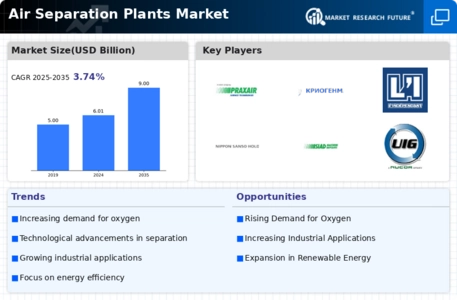
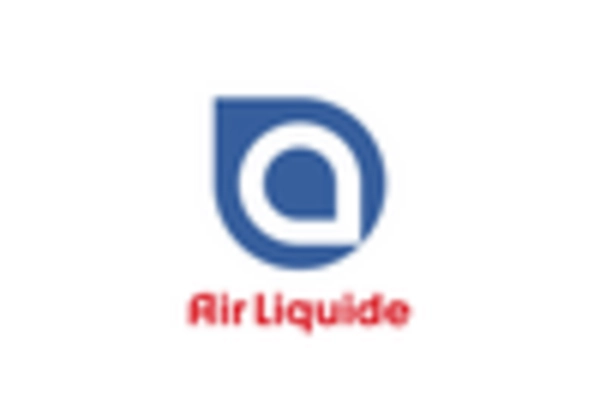
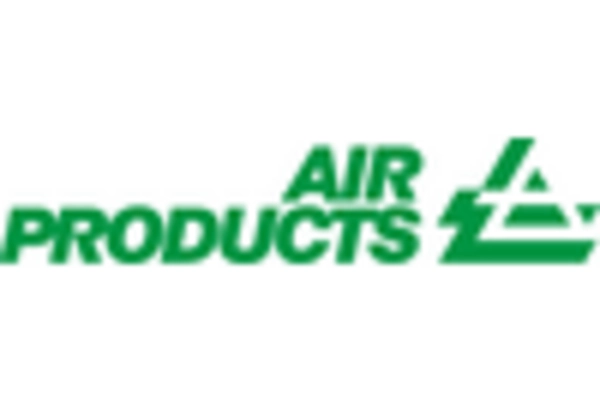
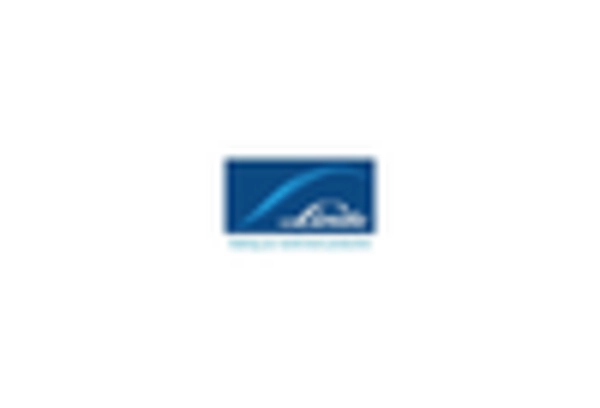
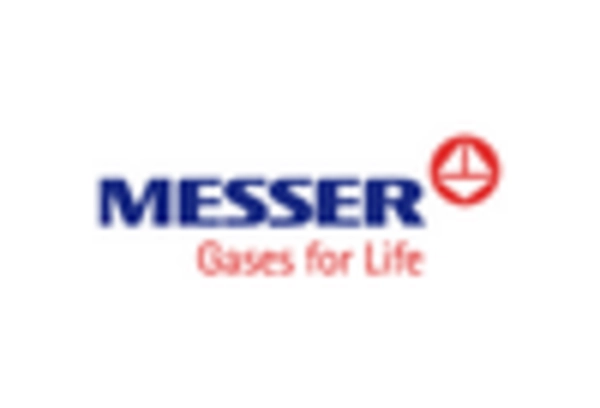
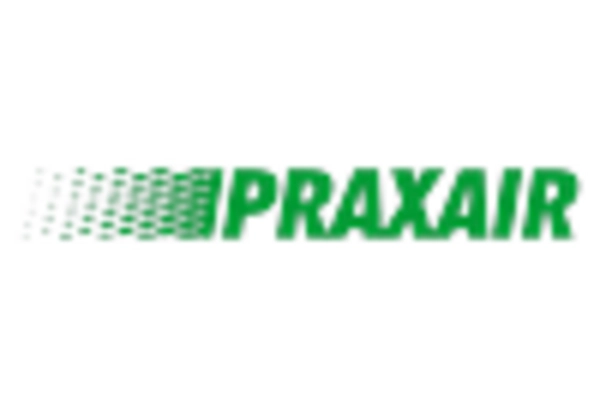
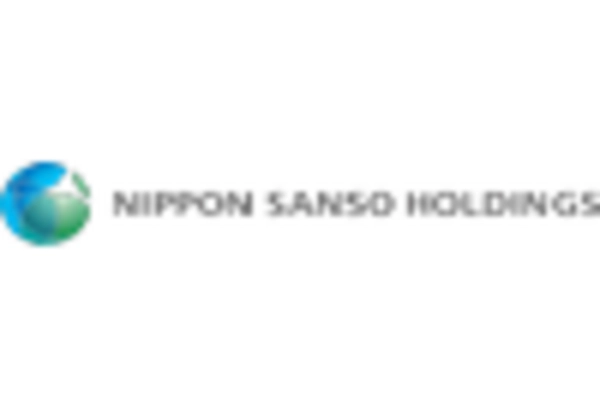









Leave a Comment